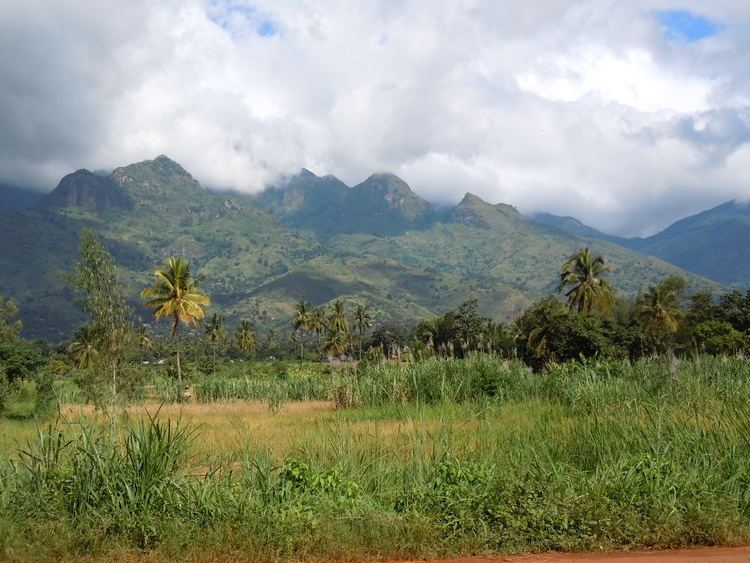Country Tanzania | Elevation 2,630 m | |
 | ||
Waterfall in the uluguru mountains in tanzania
The Uluguru Mountains are a mountain range in eastern Tanzania, named after the Luguru tribe. The main portion of the Uluguru Mountains is a ridge running roughly north-south and rising to 2,630 metres (8,600 ft) altitude at its highest point. On the main Uluguru range, 50 villages touch the forest boundary and over 151,000 people are found within the mountain area, often at increasing densities at higher altitudes up to the forest boundary.
Contents
- Waterfall in the uluguru mountains in tanzania
- Map of Uluguru Mountains Tanzania
- Copy of matombo uluguru mountains tanzania
- Geography
- Vegetation
- Climate
- Water Catchment
- Local people
- Biodiversity
- Tourism
- References
Map of Uluguru Mountains, Tanzania
Copy of matombo uluguru mountains tanzania
Geography
The Ulugurus lie 200 km inland from the Indian Ocean. They are part of a chain of mountains in eastern Africa collectively called the Eastern Arc Mountains, which include the Taita Hills, Pare Mountains, Usambara Mountains, Nguru Mountains, Rubeho, Ukaguru, Udzungwa Mountains and Mahenge Mountains.
Vegetation
The vegetation of the Uluguru main ridge and the outlying blocks is extremely variable. It ranges from drier lowland coastal forest habitats, to transitional rainforests, to sub-montane, montane and upper montane forest types.
Climate
Climatically, the Uluguru mountains capture moisture passing inland from the Indian Ocean and the east facing slopes are especially wet, with rainfall estimated at over 3,000 millimetres (120 in) per annum, with some rain falling in every month.
Water Catchment
The forests of the mountains provide the water catchment areas for the streams and rivers. This water flows mainly from the forest-capped peaks of the Ulugurus with the streams joining to form the Ruvu river, which provides the water supply to the city of Dar es Salaam. Most of the neighboring population, around 3 million people, and the major industries in Tanzania rely on this water supply for their continued survival. The loss of the Uluguru forests and any reduction in water supply potential of the mountains could therefore have a drastic impact on the human well-being and the industrial capacity of Tanzania.
Local people
The local people of the Ulugurus are the Waluguru tribe people. They have been living in the mountains for several hundred years, coming from other areas of Tanzania. The land ownership is through the female line and women are powerful in village life, in contrast to other tribes in Tanzania where men own the land and make most of the decisions about its use and management.
Biodiversity
In the Ulugurus are home to more than 100 plants, 2 birds, 2 mammals, 4 reptiles and 6 amphibians which are known from nowhere else in the world. In addition to these there are a large number of additional species which are only shared with one or two other Eastern Arc mountains, and hence are globally rare. The endemic species include African Violets, Impatiens and Begonias which are popular pot-plants in the rest of the world.
Tourism
The mountains attracts many tourists to the area, particularly due to the mountains' proximity to the former capital and economic center of Tanzania, the city of Dar es Salaam.
